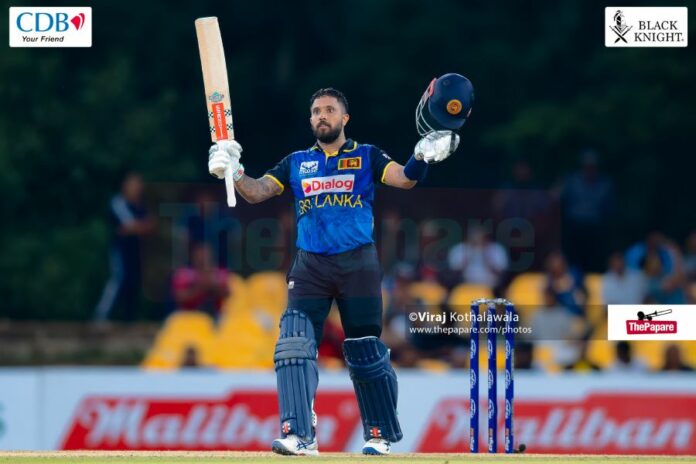Every time you declare that Kusal Mendis has turned a corner, the cricketing gods seem to conspire to prove you wrong. For years, the prolific batter has been an enigma—a player brimming with potential but plagued by inconsistency. However, this year, he has been nothing short of sensational. Sri Lanka’s fans aren’t just breathing a sigh of relief; they’re raising a toast to Mendis as he ventures into uncharted territory.
Believe it or not, Mendis is Sri Lanka’s leading run-scorer in T20 internationals this year. But that’s only the appetizer. In ODIs, he’s gone a step further, emerging as the leading run-scorer in the world. It’s been a remarkable turnaround for a player who began the year on a rocky note.
No one wants to be dropped for a Lord’s Test—cricket’s ultimate stage. Yet, that’s precisely what happened to Mendis earlier this year. It was a bold decision by the selectors, who had even named him vice-captain for the tour. The message was clear: seniority wouldn’t save you if the runs weren’t flowing.
Recalled for the final Test at The Oval after Nishan Madushka’s struggles, Mendis played a pivotal role in Sri Lanka’s dramatic win. His 39 runs may not have been headline-worthy, but they came at a crucial juncture, at better than a run-a-ball, and settled Sri Lanka’s nerves during a modest chase of 219.
With overcast skies and England’s pacers sniffing blood, Sri Lanka needed someone to break the shackles after Dimuth Karunaratne fell to a sharp return catch. Mendis rose to the occasion, attacking the quicks and forcing England captain Ollie Pope to spread the field. Once Mendis had softened the opposition, Pathum Nissanka cashed in—a perfect example of cricket’s team dynamics.
In between the Tests at Old Trafford and The Oval, consultant coach Ian Bell worked with Mendis on a few technical tweaks. Since then, Mendis has been a player reborn. While it would be unfair to credit Bell alone for the transformation, a combination of factors—including hunger, purpose, and guidance from Sanath Jayasuriya—has done wonders for him.
At the highest level, as the saying goes, “coaching doesn’t teach you how to swim, but it can help you stay afloat.” Jayasuriya’s emphasis on basics and player management has worked wonders, and Mendis has been a grateful beneficiary.
On his return home, the selectors further shuffled Mendis’ role. They promoted Dinesh Chandimal to bat at number three and slotted Mendis at number seven, handing him the wicketkeeping gloves. The move paid off spectacularly as Mendis produced a gritty half-century under pressure in the first Test and a match-winning century in the second, helping Sri Lanka sweep the series against New Zealand.
Mendis was in top gear again on Wednesday at Dambulla, smashing a career-best 143 against the Kiwis. It was a masterclass that not only anchored Sri Lanka’s innings but also shattered records. Sanath Jayasuriya’s 140 against New Zealand in the 2003 World Cup had stood as the highest score by a Sri Lankan against the Kiwis—until now. Mendis didn’t just surpass it; he also claimed the highest individual score at Dambulla, eclipsing Shikhar Dhawan’s 132 made in 2017.
There was more history in the making as Mendis and his fellow Moratuwa educated Avishka Fernando put together a 206-run stand for the second wicket. This eclipsed the 170-run partnership between Jayasuriya and Hashan Tillakaratne in 2003, setting a new benchmark for second-wicket partnerships between the two teams. It also became the highest partnership for any wicket at Dambulla.
After Avishka fell shortly after reaching his century, Mendis carried on, ensuring Sri Lanka posted a challenging total. The Kiwis started their chase briskly, reaching 88 without loss in pursuit of a revised target of 221 in 27 overs. But cricket, as they say, is a funny old game. Once the breakthrough came, the Black Caps crumbled, handing Sri Lanka a crucial win.
Charith Asalanka has been vocal in recent months about the need to improve the team’s rankings, and the results speak volumes. If Sri Lanka secures another win at Pallekele on Sunday or Tuesday, they’ll climb to fifth in the ODI rankings—a statement of intent for a team that struggled in last year’s World Cup and missed the Champions Trophy.
Sri Lanka’s resurgence has been built on attention to detail—fielding drills, sharper running between the wickets, and, most importantly, a collective sense of purpose. The turnaround has been nothing short of remarkable, and in Kusal Mendis, they’ve found a phoenix who has risen from the ashes of inconsistency to lead from the front.














